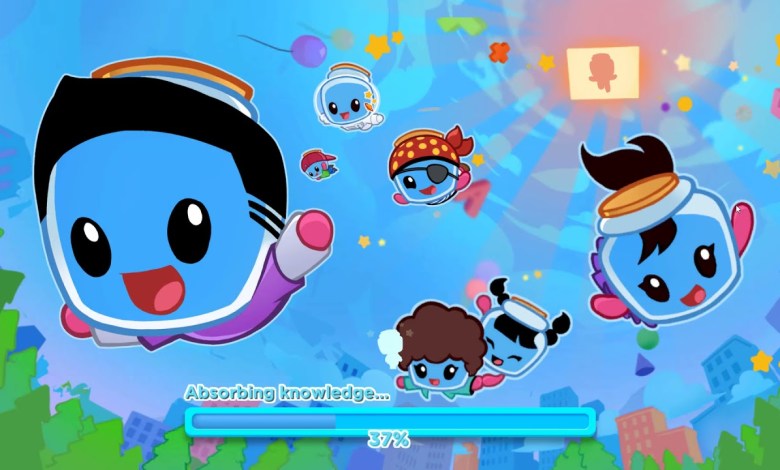The Science Behind Boddle’s Adaptive Learning Technology

Boddle’s game-based adaptive learning technology is changing how K-6 kids learn arithmetic and ELA. Boddle math uses AI to customize teaching for each learner. Boddle, founded by Edna Martinson and Clarence Tan, makes learning fun and engaging. Young learners are motivated by the platform’s 3D environment and personalized avatars. With over 2 million monthly active users, Boddle’s approach is effective and engaging, encouraging learning.
An adaptive learning technology?
AI-based adaptive learning system tailors curriculum to student performance and requirements. To ensure a smooth start, Boddle’s placement test disguises games to measure a child’s ability level. The technology adjusts question difficulty in real time to fill learning gaps and engage students. This dynamic method prevents dissatisfaction in traditional programs and promotes core skill development. Boddle math lets kids learn at their own pace, making it successful. The Boddle game’s gamification makes learning fun.
AI in Boddle’s Platform
AI powers Boddle’s adaptive learning mechanism. Student performance is tracked in real time to identify strengths and weaknesses. To help students with subtraction, the AI provides targeted practice before moving on. Boddle math uses this data to load the game with questions at the student’s level, preventing overwhelm or boredom. Static learning tools cannot match the platform’s immediate adaptability. Gamification in the Boddle game motivates pupils with points and avatar customisation.
Making Learning Fun with Gamification
Boddle’s success depends on gamification. Boddle takes math and ELA problems into a 3D world where students answer them to get bottle-headed avatar attire. This method uses children’s innate love of play to make learning fun. On “Boddle math days,” teachers report higher student engagement, with some classrooms reaching 75% progress. Students practise without realising it because to the platform’s vivid images and interactive challenges.
Compliance with Educational Standards
Boddle covers counting, addition, subtraction, shapes, and measures according to national and state standards. This ensures pupils grasp grade-level abilities. Expert instructional designers created over 100,000 math questions and lecture videos for the platform. Teachers can offer standards-based tasks for seamless classroom integration. Boddle math lets teachers customize tasks for individual or group study. Fun doesn’t compromise academic rigor with the Boddle game’s standards alignment.
Teachers and parents can track progress live
Real-time progress reports from Boddle give instructors and parents relevant insights. Teachers may track student progress, detect learning gaps, and alter instruction. If data shows a pupil struggles, a teacher may offer fraction practice. Reports can help parents support their child’s learning at home. Teachers save four to five hours each week on grading and planning by using the Boddle game’s reporting capabilities to simplify data. Boddle math is useful for classroom and home use because to this functionality.
Learning Gaps Effectively
Boddle excels at identifying and closing learning gaps. Students require reinforcement in basic operations and geometry, therefore the adaptive algorithm gives focused activities. This provides a solid basis for advanced topics. A Title I second-grade teacher said Boddle math helped struggling pupils close gaps and gain confidence. Video explainers and drawing elements help pupils solve problems independently in the Boddle game.
Supporting Student Success Tools
Boddle gives pupils learning tools. The video explainer, audio reading, and digital scratch pad allow students to solve math problems in numerous ways. Boddle math is accessible to diverse learners because to these resources. The platform adapts to keep questions hard but achievable, generating a sense of success. Students are motivated to complete assignments in Boddle because they receive rewards. Support and participation boost student confidence and learning passion.
Effectiveness Based Research
Research shows Boddle’s effectiveness, meeting ESSA Level IV, “Demonstrates a Rationale.” Research shows that Boddle’s adaptive learning enhances student performance by targeting individual requirements. Students improve arithmetic abilities and engage 50% more than in similar programs due to the platform’s gamified approach. Boddle math’s tailored practice improves high-stakes test scores for teachers like Katie Ritoch. The Boddle game’s enjoyable and challenging features make it a valuable educational tool.
The Boddle Effect on Student Motivation
Student motivation is crucial to learning, and Boddle excels at it. Reward systems like Boddle Bucks and avatar personalization keep students engaged. Unlike worksheets, Boddle makes learning fun, minimizing irritation and promoting persistence. Students enjoy Boddle math and ask to play at home, according to teachers. Students practice more with this excitement, improving performance. Boddle inspires children to love learning, keeping them engaged and confident.
Table: Key Boddle Adaptive Learning Technology Features
|
Feature |
Description |
|---|---|
|
AI-Powered Adaptation |
Adjusts question difficulty based on real-time performance to address learning gaps. |
|
Gamified Learning |
Engages students with 3D gameplay, rewards, and avatar customization in Boddle game. |
|
Standards Alignment |
Aligns with national and state math standards for K-6, ensuring relevant content. |
|
Progress Tracking |
Provides real-time reports for teachers and parents to monitor student growth. |
|
Supportive Tools |
Includes video explainers, audio reading, and digital scratch pads for problem-solving. |
|
Research-Backed |
Meets ESSA Level IV standards, with proven engagement and skill improvement. |
Accessibility, inclusivity
Boddle’s accessibility assures all pupils can use the platform. The Boddle game works on tablets, PCs, and phones, making it versatile. The platform’s premium subscriptions and public education funding mechanism expand its reach, supporting the Yass Prize’s permissionless learning ambition. The inclusive design of Boddle math aids various learners, particularly underserved populations. By giving a free version and premium features, Boddle makes its adaptive learning technology accessible to everyone.
Problems and Room for Improvement
Boddle’s platform is quite effective yet has room for improvement. Its algorithmic focus may be supplemented with conceptual learning, say detractors. While interesting, Boddle’s animations and mini-games can sometimes distract from learning. Teachers utilizing Boddle math as a station activity should limit time for balanced learning. Recent server updates have created some slowdowns, but the crew is fixing them. Boddle’s adaptive learning technology is beneficial for educators and students despite these challenges.
Future of Boddle’s Adaptive Learning
Boddle’s 2024 Yass Prize Finalist status shows its ability to change schooling. Boddle wants to reach more students by expanding its curriculum and AI tools. Personalized, gamified learning makes the platform an edtech leader. Boddle math will succeed as it grows by adapting to individual needs and keeping engagement. The Boddle game’s creative strategy makes learning interesting, effective, and accessible, ensuring a brighter educational future.
Conclusion
Boddle’s adaptive learning technology revolutionizes K-6 education with AI-driven personalization and game fun. Boddle math helps educators and parents support young learners by matching content to student needs, aligning with standards, and offering real-time feedback. The gamified method boosts motivation and confidence, and data supports its effects on student outcomes. Boddle continues to innovate, showing how technology can make learning enjoyable and impactful, laying the groundwork for future success.

.jpg?w=390&resize=390,220&ssl=1)

.png?w=390&resize=390,220&ssl=1)